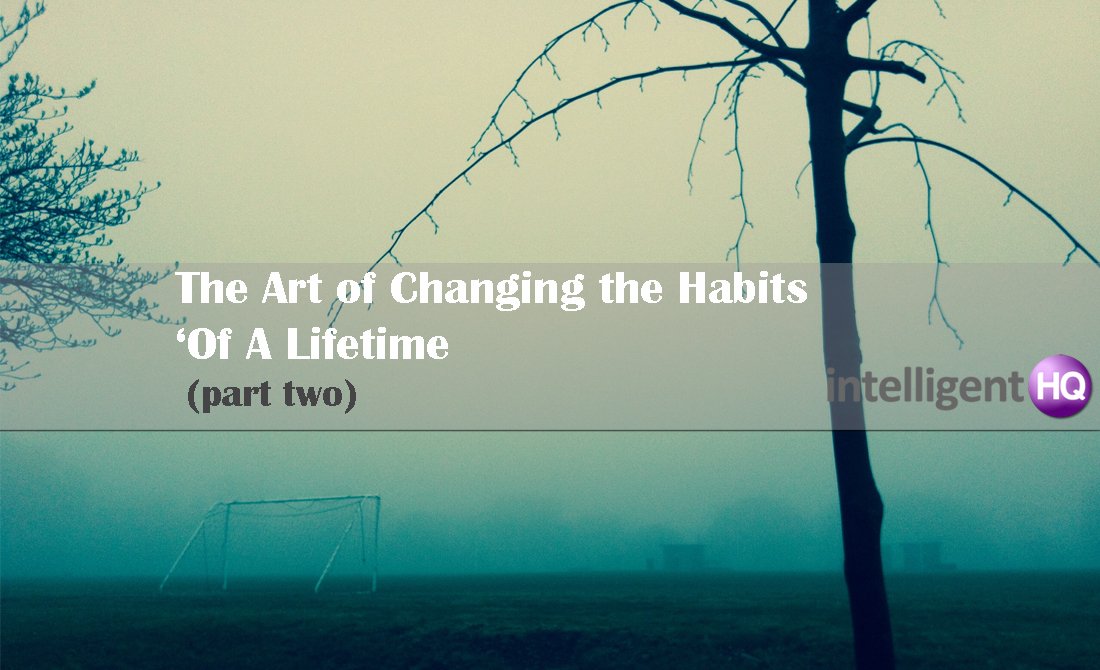How to Have an Impact Beyond the Campaign
The fate of earth and humanity are one in the same. How we treat the earth is indicative of how we treat ourselves and vice-versa. Sustainability challenges are local, but with global implications. The political and business climate is changing, albeit too slowly for some, and too fast for others. But as these traditional institutions evolve another force is also taking precedent toward creating change: cause marketing.
There are no shortages of causes that seek our valuable time and resources. Earth Day, World Water Day, Earth Hour, #Race Together, and the #IceBucketChallenge are a few of the causes which are representative of the intensifying challenges facing humanity. Cause marketing, accelerated by social media and a growing impatience among citizens who feel there is a lack of business and government solutions, is a tool for creating change and rapid awareness. But can cause marketing result in commitments beyond the campaigns? Can it achieve sustainable outcomes?
This daily barrage can quickly overwhelm an inbox, let alone one’s conscious. The causes are endless and with each new campaign the appeals by those managing the marketing become more and more emotional. With such constant bombardment and intensity of requests, cause marketing runs the risk of oversaturating the consumer. Further, if cause marketing is not carried out with the upmost authenticity and integrity, it runs the risk of resulting in unintended outcomes such as: further desensitization, skepticism, and withdraw of interest, accountability, and action from consumers.
The speed, scale/reach, and sourcing opportunities associated with social media have boosted cause marketing campaigns. According to IEG’s Sponsorship Report, sponsorship in cause marketing is estimated to reach $1.9 billion in 2015, a 3.7% increase from 2014.
Cause marketing is also big business. It is a form of marketing that is proving effective at raising millions for philanthropic goals, and a strategy that aligns the social purpose of an organization with the evolving consciousness of the consumer. According to a 2013 report by Cone Communications, 89% of U.S. consumers are likely to switch brands to ones that associate with a cause; and a 2014 Nielson study reported that 42% of North American respondents would pay more for products and services from companies that are committed to social and environmental performance.
So why do some cause marketing efforts, like Starbuck’s recent #RaceTogether, leave us skeptical and blow up in the face of CEO’s like Howard Shultz, while other campaigns like the Ice Bucket challenge of 2014 go instantaneously viral? It comes down to offering options for engagement, accountability, and trust building.
Last summer the Ice Bucket Challenge went viral as an estimated 2.4 million tagged videos were circulated by Facebook alone. The challenge, created to create awareness of the disease amyotrophic lateral sclerosis (ALS, also known as Lou Gehrig’s Disease) and stimulate donations for research, was deemed by many, a successful campaign. Last August the ALS Association reported that more than $100 million in donations had been received, a significant increase from their prior year’s fundraising efforts.
As cause marketing campaigns flood our in-boxes, it begs the question of whether there is a new social norm that has been created, whereby people feel obligated to participate in social causes for self-righteous reasons, and to ensure that they are perceived as doing good while also feeling a sense of purpose by contributing to a trending tribal connectedness.
Some people challenge the vitality of cause marketing however. For example, opponents to the cause marketing effort for the Ice Bucket Challenge point out that 40-50% of the first time donors will likely never donate to ALS again beyond the challenge. For people who put their heart and soul into fundraising and elevating awareness of specific causes this is discouraging. Those who put their passion into specific causes are truly working on fundamental change. The here and now, in the moment, like this trend fleeting nature of cause marketing is creating a schizophrenia of emotion and limiting the longer-term carry through of conviction, action, and accountability that most causes require for change agents to be successful.
Millenials and Cause Marketing
In the past month I’ve been on a speaking tour of my most recent book, “Time to Trust: Mobilizing Humanity for a Sustainable Future.” In the process I’ve had the opportunity to speak to and meet with people representing a diversity of ages, backgrounds, and economic status. I am always listening and looking for new, similar, and polar points of view and perspective. Some feedback that has stuck with me is how frequently Millennial’s remarked that when it comes to sustainability and social causes, they were very impatient.
In fact in 2014 the MLSGroup conducted a global survey of more than 8,000 Millennial’s and found that 69% want businesses to make it easier for consumers to get involved in societal issues. From my anecdotal book tour experience, millennial after millennial remarked that to remain engaged with an issue, they like to see immediate impacts and strong sense of accomplishment. The sentiment of Millennials reminded me of the fleeting nature of so many cause marking campaigns.
We are, as a generalization, very good at leveraging social media to rapidly create awareness to a cause and solicit the first wave of support at mass scale. The initial success of cause marketing is typically reflected by indicators such as Facebook “like’s,” number of page visits, and number of shares. These indicators are indicative of “activity,” but not necessarily impact. A second order indicator of a cause marketing campaign’s impact is actions such as “votes” (for politically motivated campaigns) and “dollars raised” (for fundraising campaigns). These indicators provide more substantial evidence of a campaigns’ accomplishment, as they require a participant to take an action and commit to something (donating time, money, or making a decision).
With cause marketing, the quicker the uptake the sooner the campaign can result in immediate first and second order results. This type of campaign is addictive, as it immediately can show progress, placating into people’s sense of purpose and accomplishment. But for all of the momentum that is built in cause marketing, there is also another challenge: longevity. Cause marketing can be extremely fleeting. Although it is fun to ride the wave and watch a cause marketing campaign go viral, but once the market is saturated, the campaign typically wipes out quickly. Well after the gas stations and convenience stores have had time to restock bags of ice and bank accounts reconcile the final $15 donation made to the cause, its back to daily life for most people. That is, at least until the trumpet of the next cool cause marketing campaign sounds. In 2014 Cone Communications conducted a “Digital Activism Study” and found that “64% of Americans are more inclined to support issues offline after first “liking” or “following” an organization online (for Millennials the number was 80%)”.
It’s encouraging that Millennials and other Americans want to engage in causes beyond the campaign. After the money is tallied and the Wikipedia pages updated, causes will required leadership and commitment long after the campaign boom. The fact that social media can be a way to create awareness and solicit engagement is great. However if the goal for a cause campaign goes beyond one-time fundraising, strategists need to ensure they develop a plan that builds trust, is delivered simply and with authenticity, and evokes long-term conviction from participants.
What makes a cause marketing campaign successful?
Cause marketing has demonstrated incredible success when the right messaging is tied to the types of actions and impacts that are sought. What’s concerning is how fickle some campaigns can be, preying upon the social pressures and inherent generosity of people’s time and money. I’m not suggesting that people should not donate as much time and money as they choose to any or all causes. I am suggesting however that cause marketing strategists need to be mindful of the outcomes and impacts they would like to see, and understand that many consumers are becoming oversaturated with cause-related opportunities.
For humanity to address complex, converging, persistent, and entrenched issues ranging from disease, hunger, environment, climate, race, economic inequality, and gender we need commitment and action from every citizen that far exceeds a “like” or “follow” on Facebook and a “send” of money on Kickstarter. We need a fundamental shift in philosophy that motivates awareness, behavior, actions, and impacts beyond the illusory hype and success of cause marketing campaigns. Sustainability is a long-term journey that will be measured not only by one-off quick success stories, but also by the determination of humanity to continuously seek progress, during the darkest hours of disease, hunger, and social challenges, not just perceived victory during the height of buzz creation.
Being aware of the world’s challenges does not require first hand front line accounts, although such perspective is needed. But if you have ever been on the front lines of any cause you know the difference between living it and talking about it. People that only live to tell the story for their own personal gain are cause-posers, blips on a scale of time that typically have little influence or impact to the cause.
Humanity needs lasting change, not just slacktavists, cause posers, entertainers, and short-lived marketing campaigns. There is no doubt that change can happen in an instant, and when humanity is mobilized it can achieve tremendous outcomes. But the hard truth and pill for most of us to swallow is that change also takes time and a long-term commitment. As powerful cause marketing can be, let’s also never forget that people on the front lines of change and causes really need support, far greater than having more than money, and a few more “likes” and followers on Facebook.
The issues converging on humanity are demanding. People on the front lines of causes need a dedicated and trusted team of supporters that can share in their passion, provide enduring strength, and embark on a long-term process and commitment of time that runs wider and deeper than a slideshow of what we did last summer on vacation. If we are to have a sincere impact on the world we need to crowd source more than a few bucks and likes – we need to crowd source a commitment to personal accountability, trust, and leadership.
In 2015, think about those causes you choose to support. Ask yourself, am I a poser, or am I really in this thing for the long haul? We need more leaders, those that stand the test of time, and demonstrate humility and courage in their convictions. Leaders don’t join a cause because one million others did the same. Leaders continue their impassioned support of the cause even when it’s no longer the bright shiny object.
Mark Coleman is a recognized voice, business advisor and consultant on the convergence of sustainability, environmental stewardship, energy, technology, and innovation.
Mr. Coleman is an active blogger with the Huffington Post, and has published numerous articles with leading organizations including GreenBiz.com, Environmental Leader, Triple Bottom Line Magazine, among others.
Mr. Coleman is the President of Convergence, Mitigation, Management (CMM) LLC, which provides custom business intelligence and advisory services for business, government, applied research, not-for-profit, and non-governmental organizations.
Mr. Coleman has advised hundreds of organizations in the areas of sustainability, risk, innovation, operational effectiveness, and business strategy. Much of this work led Mr. Coleman to write and publish two books, Time To Trust: Mobilizing Humanity for a Sustainable Future (Motivational Press 2014, www.timetotrustbook.com) and The Sustainability Generation: The Politics of Change and Why Personal Accountability is Essential NOW! (SelectBooks 2012, www.thesustainabilitygeneration.com) both of which highlight his perspective on holistic systems-level logic and theory for advancing humanity beyond the status-quo toward more integrated and mutual models of sustainable development.
Mr. Coleman currently serves on the board of the Sustainable Manufacturer Network (http://sustainablemfr.com/), and on the board of a not-for-profit organization, B9 Plastics (www.b9plastics.org) involving global water development concerns.
Mr. Coleman resides in the Finger Lakes region of New York with his wife Aileen and two sons, Owen and Neal.
Web:
Website: www.timetotrustbook.com
Twitter: @TheSustainGen



























